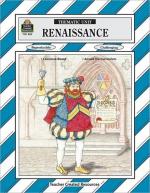|
This section contains 2,020 words (approx. 7 pages at 300 words per page) |

|
Urban Elites. The citizenry of the towns consisted of the patriciate and the artisans. Almost every town had a relatively small group of families that had the largest fortunes and controlled most of the political offices of the town. These individuals represented the patriciate. Most men in the patriciate belonged to one of two clusters of occupations: they were either merchants and bankers or they belonged to one of the learned professions, primarily the law. They emulated the nobility by not actually making anything, but by controlling the activities of those who did make things. Also like the nobility, patricians preserved their social distinctiveness by blocking upward social mobility for all but a few nonmerchants, or professionals. Elite families forged multiple links by marriage and made various deals to ensure that they were represented politically in urban policy. Occasionally...
|
This section contains 2,020 words (approx. 7 pages at 300 words per page) |

|




